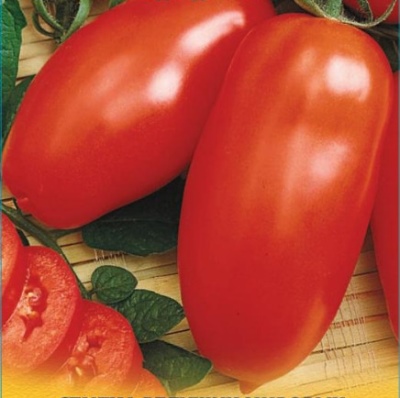
- Authors: Monsanto Holland B. V.
- Year of approval: 2007
- Name synonyms: Hypeel 108
- Category: hybrid
- Growth type: determinant
- Appointment: fresh consumption, for whole-fruit canning, for canning in slices
- Ripening period: mid-early
- Ripening time, days: 87-92
- Growing conditions: for open ground, for film greenhouses
- Bush size: medium-sized
Many gardeners and farmers, choosing tomatoes for growing, prefer Dutch hybrids with unpretentious agricultural technology. One of the most popular is the mid-early tomato Hypil 108, which grows productively both in beds and in film shelters.
Breeding history
The Hypil 108 nightshade crop is the fruit of many years of work by a group of Dutch breeders Monsanto Holland B. V. The hybrid was approved for use in 2007. Zoned tomato for all regions of Russia. The vegetable grows both in open ground and in protected.
Description of the variety
The Hypil 108 tomato is a medium-sized plant of the determinant type. The bush, which grows up to 50-80 cm in height, is characterized by compactness, strong stems, a well-developed rod-type root system, moderate thickening of light green foliage and intermediate inflorescences. In each fruit cluster 3-5 berries are tied. When growing a tomato, it is necessary not to forget about the formation of bushes in 1-2 stems, the obligatory tying, despite the average height, as well as partial pinching to the first brush.
The main qualities of the fruit
The Dutch hybrid belongs to medium-sized tomatoes, gaining a mass of 84-110 grams. The vegetable is endowed with an elliptical shape with a perfectly smooth surface. Sometimes tomatoes grow pear-shaped with a thickening. Ripe tomato is evenly covered with a rich red color, and at the stage of technical maturity - green.
The peel of the vegetable is dense, but not tough. Thanks to the skin, the tomato does not crack, tolerates transportation and is stored for a long time without losing its taste and marketability. Tomatoes are widely used in cooking, they are eaten fresh, canned whole, pickled, and are suitable for pickling.
Taste characteristics
Despite the hybridity, the tomato tastes excellent. Its pulp is dense, medium-viscous, practically free of seeds. Tomato has a balanced taste, sweet and sour, with a spicy aroma that not all hybrid species possess. In the context, the pulp has a light red color, without veins and voids.
Ripening and fruiting
Hypil 108 tomatoes medium early. From germination of sprouts to ripe tomatoes in the garden, only 87-92 days pass. Tomatoes spice together, so you can shoot whole bunches. Fruiting peaks in July, but you can taste the first tomato at the end of June.
Yield
High-yielding variety. When performing standard agricultural techniques, the plant will certainly give a plentiful and stable harvest. On average, 7.8 kg of tomatoes ripen per 1 m2. In greenhouses, the yield is 20% higher.
The timing of planting seedlings and planting in the ground
The cultivation of the plant goes through seedlings. It is recommended to sow seeds 55-65 days before transferring to a new place. The optimal period is considered to be the period from the last week of February to the end of March. For the growth of bushes, favorable temperature and light conditions are created. Germination occurs after 6-8 days. At the stage of the appearance of 3 leaves, the seedlings are dived (seated separately from each other). 10-14 days before transplanting, you need to harden the seedlings, exposing them to fresh air daily. Bushes can be planted in the garden from late April to mid-May (depending on the weather).

Growing tomato seedlings is an extremely important process, because it largely depends on whether the gardener can harvest at all. All aspects must be taken into account, from seedbed preparation to planting in the ground.
Landing scheme
It is important not only to choose a fruitful tomato variety, but also to plant the seedlings correctly, observing the density and pattern. It is enough to place 5-7 compact bushes per 1 m2. The recommended scheme for planting is 40x60 cm.

Growing and caring
Tomato is a little picky about growing conditions. It is suitable for a fertile, loose and breathable soil with neutral acidity. In addition, the soil must be fed with organic fertilizers. The tomato is thermophilic, so the area should be well lit by the sun.
With regard to care, the culture should be provided with watering (drip system), feeding, weeding and loosening the soil, forming and tying to supports, as well as protection from insects and fungi. When growing in a greenhouse, don't forget about ventilation and humidity control.




A plant needs different micronutrients at each stage of growth. All fertilizers can be divided into two groups: mineral and organic. Folk remedies are often used: iodine, yeast, bird droppings, eggshells.
It is important to observe the rate and period of feeding. This also applies to folk remedies and organic fertilizers.
Disease and pest resistance
The variety has high immunity. Tomatoes are rarely susceptible to diseases such as nematodes, fusarium wilting, alternaria cancer, brown spot and verticillosis. Due to its early maturity, the tomato also leaves phytophthora.


Resistant to adverse weather conditions
The hybrid's resistance to stress is sufficient to withstand prolonged drought and extreme heat. Tomato intolerance manifests itself only to sharp temperature fluctuations and a lack of light.

























































































